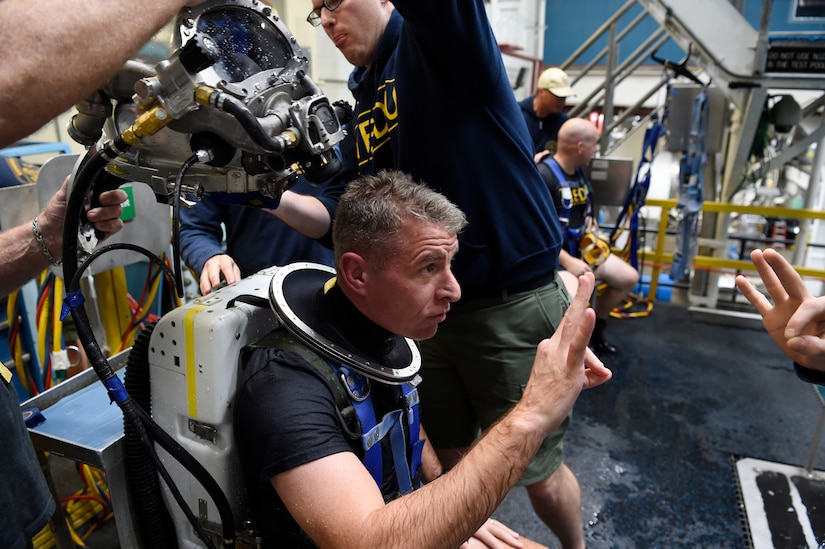By Warren Duffie Jr., Office of Naval Research
ARLINGTON, Va. -- The Navy diver hoisted a 60-pound life-support regulator onto his back, hence donned a 30-pound metallic helmet.
Fellow divers connected his diving conform to an “umbilical” hose pumping inwards breathing gas in addition to establishing communications amongst the surface. After receiving approving to instruct inwards the water, the diver descended into a large exam puddle at Naval Surface Warfare Center Panama City Division, Florida, domicile to the Navy Experimental Diving Unit.
New System
The diver’s mission: demonstrate the effectiveness of the MK29 Mixed Gas Rebreather -- a epitome organisation that’s the starting fourth dimension of its form inside the Navy diving community, developed past times Naval Surface Warfare Center Panama City Division.
The engineering scientific discipline is sponsored past times the Office of Naval Research Global TechSolutions program. TechSolutions is ONR Global’s rapid-response scientific discipline in addition to engineering scientific discipline programme that develops epitome technologies to address issues raised past times sailors in addition to Marines, unremarkably inside 12 months.
“This rebreather organisation is an awesome chance to heighten the capabilities of Navy divers in addition to accelerate their deployments,” said Navy Command Master Chief Petty Officer Matt Matteson, who heads upward TechSolutions for the Office of Naval Research.
Navy diving missions include underwater rescues, explosive ordnance disposal, ship hull maintenance, recovery of sunken equipment in addition to relieve of vessels in addition to aircraft.
Beneath the waves, Navy divers breathe a mixture of oxygen in addition to nitrogen. Below 150 feet, however, nitrogen becomes toxic -- leading to nitrogen narcosis, a drowsy dry reason that tin tardily mental sharpness severely in addition to jeopardize safe render to the surface.
Conserving Helium
The solution is to supercede nitrogen amongst helium. However, helium is expensive in addition to difficult to obtain because of recent worldwide shortages. And the Navy needs a lot of it for missions in addition to preparation exercises, requiring canisters of the gas to live on transported on accompanying ships or planes.
The MK29 rebreather solves these problems. Used oxygen-helium is filtered through a carbon dioxide scrubber, which removes carbon dioxide in addition to recycles the breathable gasses dorsum to the diver.
The result? Very petty venting or wasted helium.
“The MK29 decreases helium requirements past times unopen to lxxx percent,” said John Camperman, a senior scientist overseeing the evolution of the MK29 at NSWC Panama City. “Divers tin perform to a greater extent than dives amongst the same amount of gas, or convey less helium.”
Test results advise this organisation volition live on a major property to Navy divers, who tin non solely perform to a greater extent than dives merely likewise remain underwater longer if surface provide gas is interrupted.
Titanium Tubing Adds Safety Factor
The MK29 fifty-fifty reduces breathing dissonance in addition to fogging of helmet viewports. It’s likewise the starting fourth dimension piece of Navy diving equipment to characteristic 3D-printed titanium tubing that connects hoses from the helmet’s breathing manifold to the regulator backpack. The titanium reduces the run a jeopardy of breathing hoses beingness sliced past times abrupt or jagged underwater objects.
The thought for the MK29 came from a Naval Surface Warfare Center Panama City Division original diver, who contacted TechSolutions seeking a agency to trim helium consumption spell using newly available rebreather technology. Recognizing the expertise of Camperman in addition to his team, TechSolutions asked them to develop the MK29.
Camperman’s inquiry squad volition bear farther MK29 tests this year, in addition to promise to run into the rebreather issued throughout the fleet past times adjacent year.

Comments
Post a Comment